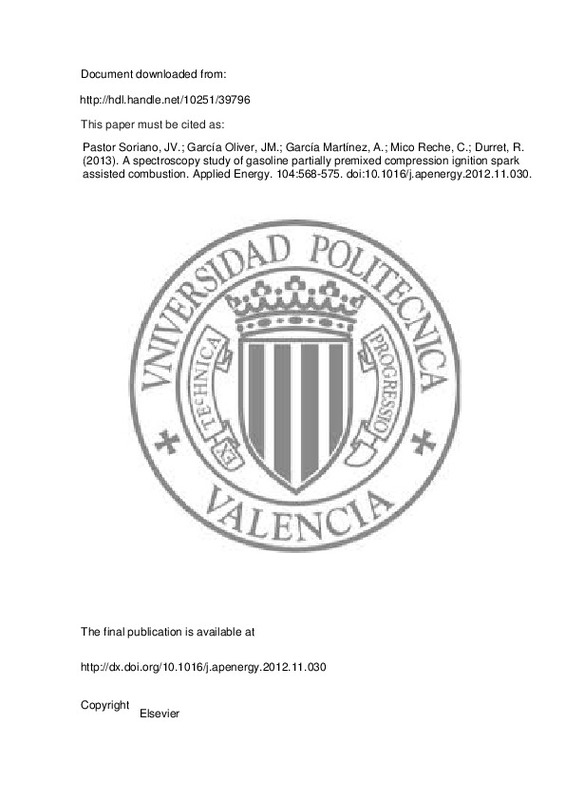JavaScript is disabled for your browser. Some features of this site may not work without it.
Buscar en RiuNet
Listar
Mi cuenta
Estadísticas
Ayuda RiuNet
Admin. UPV
A spectroscopy study of gasoline partially premixed compression ignition spark assisted combustion
Mostrar el registro sencillo del ítem
Ficheros en el ítem
| dc.contributor.author | Pastor Soriano, José Vicente
|
es_ES |
| dc.contributor.author | García Oliver, José María
|
es_ES |
| dc.contributor.author | García Martínez, Antonio
|
es_ES |
| dc.contributor.author | Micó Reche, Carlos
|
es_ES |
| dc.contributor.author | Durret, R.
|
es_ES |
| dc.date.accessioned | 2014-09-22T06:58:18Z | |
| dc.date.available | 2014-09-22T06:58:18Z | |
| dc.date.issued | 2013-04 | |
| dc.identifier.issn | 0306-2619 | |
| dc.identifier.uri | http://hdl.handle.net/10251/39796 | |
| dc.description.abstract | Nowadays many research efforts are focused on the study and development of new combustion modes, mainly based on the use of locally lean air–fuel mixtures. This characteristic, combined with exhaust gas recirculation, provides low combustion temperatures that reduces pollutant formation and increases efficiency. However these combustion concepts have some drawbacks, related to combustion phasing control, which must be overcome. In this way, the use of a spark plug has shown to be a good solution to improve phasing control in combination with lean low temperature combustion. Its performance is well reported on bibliography, however phenomena involving the combustion process are not completely described. The aim of the present work is to develop a detailed description of the spark assisted compression ignition mode by means of application of UV–Visible spectrometry, in order to improve insight on the combustion process. Tests have been performed in an optical engine by means of broadband radiation imaging and emission spectrometry. The engine hardware is typical of a compression ignition passenger car application. Gasoline was used as the fuel due to its low reactivity. Combining broadband luminosity images with pressure-derived heat-release rate and UV–Visible spectra, it was possible to identify different stages of the combustion reaction. After the spark discharge, a first flame kernel appears and starts growing as a premixed flame front, characterized by a low and constant heat-release rate in combination with the presence of remarkable OH radical radiation. Heat release increases temperature and pressure inside the combustion chamber, which causes the auto-ignition of the rest of the unburned mixture. This second stage is characterized by a more pronounced rate of heat release and a faster propagation of the reactions through the combustion chamber. Moreover, the measured UV–Visible spectra show some differences in comparison with the other stages. The relative intensities in of spectra from different combustion radicals have also been related to the different combustion phases. | es_ES |
| dc.description.sponsorship | The authors acknowledge that part of this work was performed in the frame of Project DUFUEL TRA2011-26359, funded by the Spanish Government. The authors also thank GM for technical assistance and its support in other parts of this work. | en_EN |
| dc.language | Inglés | es_ES |
| dc.publisher | Elsevier | es_ES |
| dc.relation.ispartof | Applied Energy | es_ES |
| dc.rights | Reserva de todos los derechos | es_ES |
| dc.subject | PPC | es_ES |
| dc.subject | Spark assistance | es_ES |
| dc.subject | Gasoline fuel | es_ES |
| dc.subject | Optical investigation | es_ES |
| dc.subject | Combustion description | es_ES |
| dc.subject.classification | MAQUINAS Y MOTORES TERMICOS | es_ES |
| dc.title | A spectroscopy study of gasoline partially premixed compression ignition spark assisted combustion | es_ES |
| dc.type | Artículo | es_ES |
| dc.identifier.doi | 10.1016/j.apenergy.2012.11.030 | |
| dc.relation.projectID | info:eu-repo/grantAgreement/MICINN//TRA2011-26359/ES/COMBUSTION EFICIENTE Y LIMPIA EN MOTORES DE ENCENDIDO POR COMPRESION UTILIZANDO EL CONCEPTO DUAL-FUEL/ | es_ES |
| dc.rights.accessRights | Abierto | es_ES |
| dc.contributor.affiliation | Universitat Politècnica de València. Departamento de Máquinas y Motores Térmicos - Departament de Màquines i Motors Tèrmics | es_ES |
| dc.description.bibliographicCitation | Pastor Soriano, JV.; García Oliver, JM.; García Martínez, A.; Micó Reche, C.; Durret, R. (2013). A spectroscopy study of gasoline partially premixed compression ignition spark assisted combustion. Applied Energy. 104:568-575. https://doi.org/10.1016/j.apenergy.2012.11.030 | es_ES |
| dc.description.accrualMethod | S | es_ES |
| dc.relation.publisherversion | http://dx.doi.org/10.1016/j.apenergy.2012.11.030 | es_ES |
| dc.description.upvformatpinicio | 568 | es_ES |
| dc.description.upvformatpfin | 575 | es_ES |
| dc.type.version | info:eu-repo/semantics/publishedVersion | es_ES |
| dc.description.volume | 104 | es_ES |
| dc.relation.senia | 233709 | |
| dc.contributor.funder | Ministerio de Ciencia e Innovación | es_ES |







![[Cerrado]](/themes/UPV/images/candado.png)

